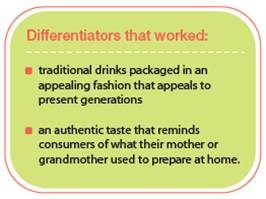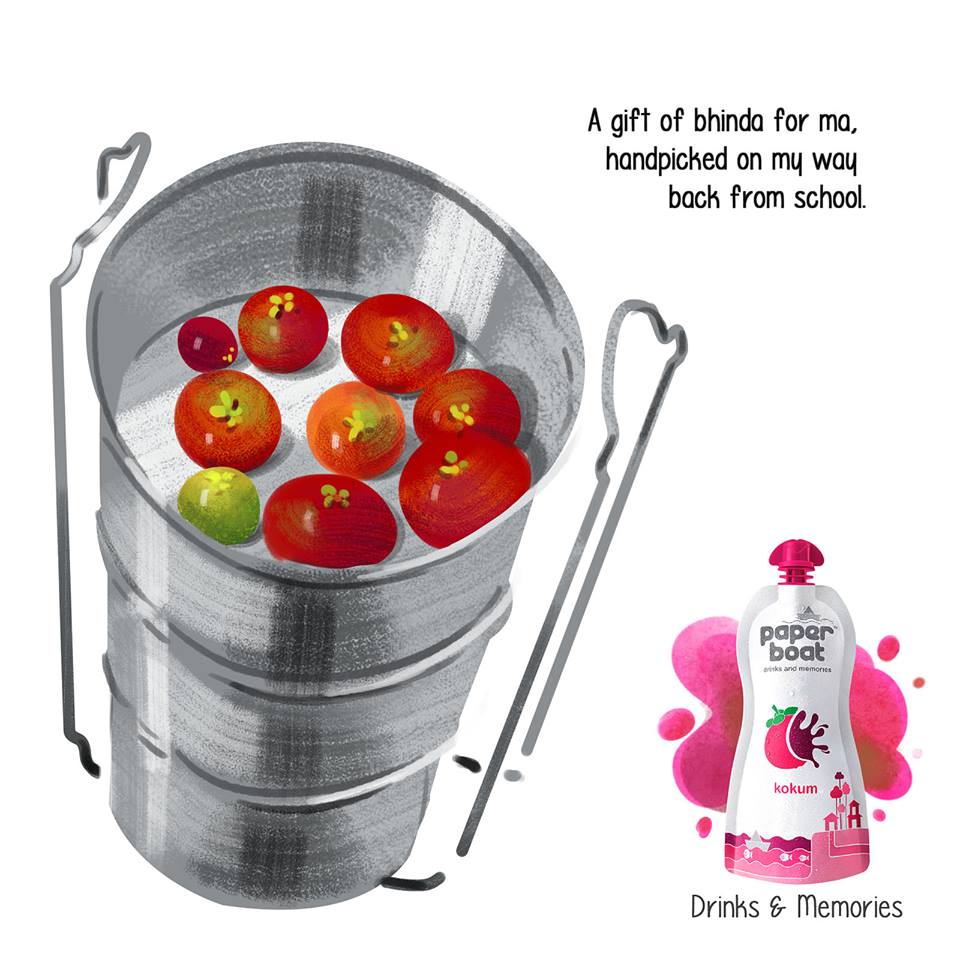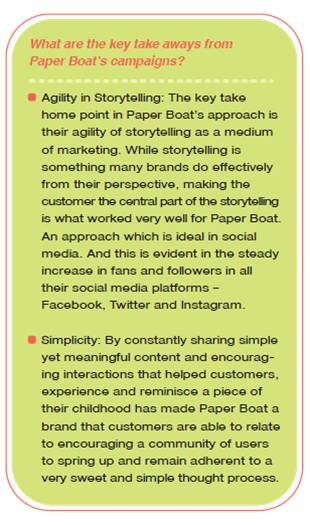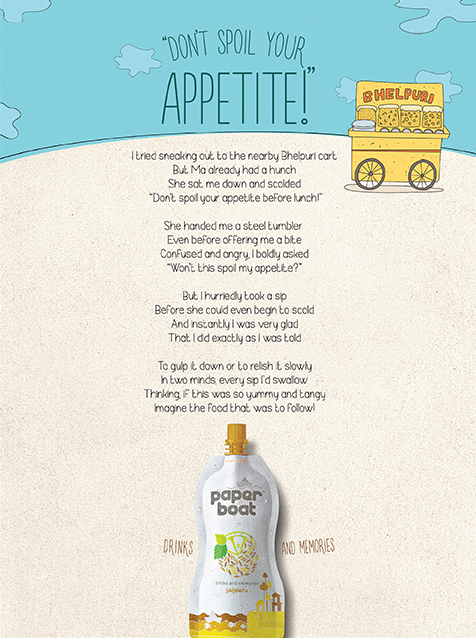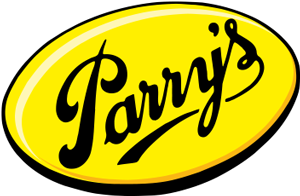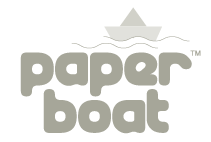
What was the campaign about?
Paper Boat is a brand of traditional Indian juices and drinks by Hector Beverages. What caught our key about this young, vibrant brand is the emotional connect it has made with consumers in a short span of time. Not an easy task, given the large budgets of some alternate / competitor brands. In terms of new age marketing, we find Paper Boat has trumped in their use of story-telling to create engaging content that has not just built brand awareness but a special kind of emotional connect and loyalty with its target audience. What we find works well in this brand is that the Paper Boat stories spring from the very essence of the brand and its philosophy.
Also one of the key features of the product itself is the packaging. From both aesthetic and functional perspective the packaging is very unique and appealing to the customer. The PaperBoat pouches are made of a four-part laminate. The two outer layers are a blend of proprietary polypropylene and polyethylene which makes the pack with-stand extremes in pressure and heat while at the same time being easy to print upon. The penultimate layer is made of bonded aluminum which keeps any form of moisture and vapour from entering the pack and tampering the goodness of the drink. This layer makes no contact with the drink. The innermost (and final) layer is made of virgin, food-grade polypropylene which keeps the content fresh, safe and tasty.
From a marketing perspective Paper boat’s brand promise is based on two broad aspects – drinks and memories. Their marketing campaigns have revolved around this philosophy by tapping into the memories and lives of the people’s childhood experiences that are in many ways connected to the drinks that they’ve had daily. From the actual product which includes much loved Indian flavours like Jal jeera, South Indian rasam or golgappe ki pani to the stories associated with them, the brand hits all the right notes and leaves a very happy after taste in the minds of the customer.
Their Marketing Approach
Paper Boat’s marketing campaign hinges around nostalgia and simplicity in its storytelling campaign as part of its marketing strategy. The campaign was crafted with a view to target urban India, particularly aged between 20 and 40: a large part of the demographic that grew up in 1990s India. The geographical target was crafted with a view to reach out to communities that had left their native homes to other parts of the country in pursuit of work and domestic demands. Using poetry instead of lyrical music, he story unfolds through both, visuals and audio. The return to an innocent and naïve time that everyone associates with the grand epithet of “the good old days” was re-created through the combination of animation that reminds one of simpler times, and music that matches a quaint, old-worldly charm.
Social Media Approach
Paper Boat’s social media approach included presence on Facebook, Twitter, Instagram and YouTube, as their key platforms for sharing stories and interactions with customers. Paper Boat built the Facebook and Twitter page around its brand philosophy, “Life still is Beautiful”. In the process, the dialogue remained alive around nostalgia, memories and elements from one’s childhood that come to mind in reminiscence. Everything from flying kites to catching auto rickshaws, from trying to reach for a jar full of treats atop a high cupboard, to making Paper Boats became a point of conversation. Games from one’s younger days, such as the desi versions of cops and robbers in the form of Raja, mantri, chor, sipahi, hopscotch and the top classroom favourite game Flames became a point of conversation. Indirectly, Paper Boat let the boat sail on the waters of nostalgia, encouraging sharing and exchange on bygone eras.
What worked for Paper Boat?
Storytelling Approach: What worked very well for Paper Boat on social media was in getting their fans and customers to share their childhood stories and moments on social media – allowing them access and relive a piece of their childhood life through these stories By tapping into these memories and creating interactions online with their customers, it helped build the brand among its audience by making it part of their daily life.
Customer Centricity: By focusing on their brand philosophy rather than on their product itself in their marketing approach, it helped build a more customer centric brand rather than pushing the brand’s agenda. It always helps when a brand can connect to customers and their lives in ways that are meaningful to them and Paper boat has done just that. By doing so then engagement Paperboat created online among its microcosm of users brought a sense of sustained ownership with the brand, its philosophy and the product. Paper Boat became a new avenue for people to connect across the country’s length and breadth, to share the little moments that defined their lives, regardless of where they lived.
Making stories work for the brand
“Social media today is part of everyday life and our presence has clearly helped increase the brand awareness for Paper Boat significantly and I can confidently say that it has had a positive impact on our business and revenues. We’ve had a consistent increase in fans and followers across our key social media platforms and it continues to be on the rise” – Parvesh Debuka, Marketing Head, Paper Boat.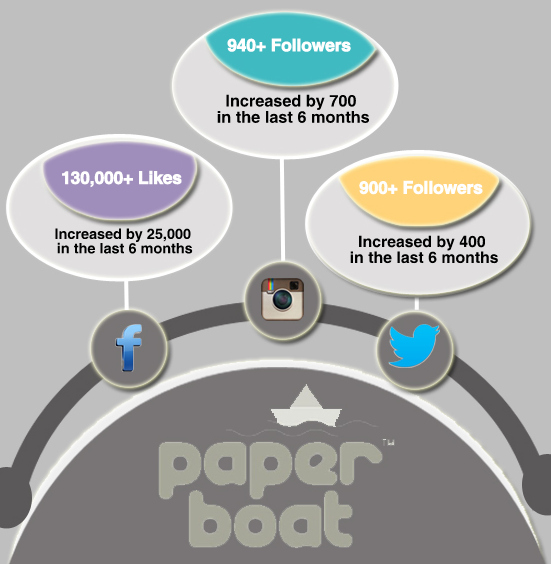
To download our e-book that has a whole list of other case studies for you to read, click here.
Written by: Kirthi Jayakumar
Research team: Keerthi Ramesh | Ramya Rajaraman | Priya Balan
Special thanks to: Parvesh Debuka, Head – Marketing, Paper Boat

